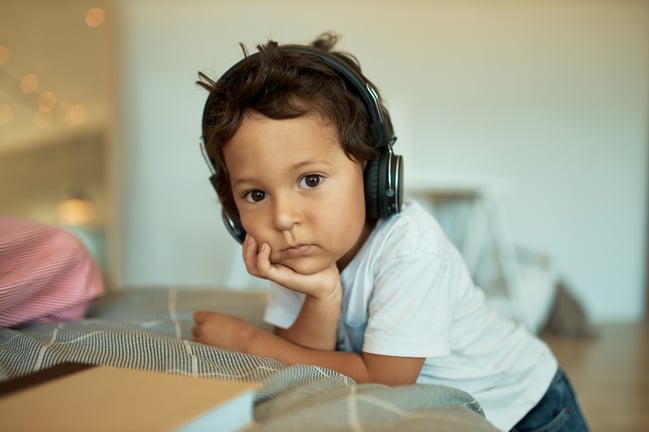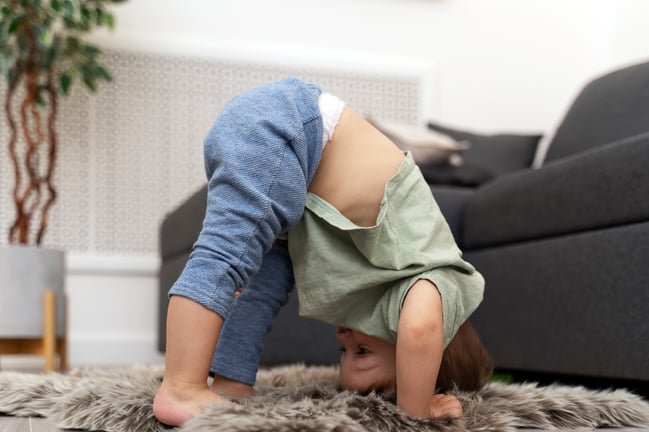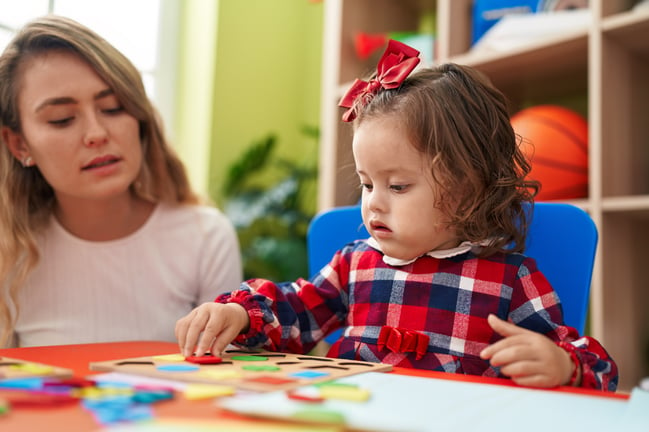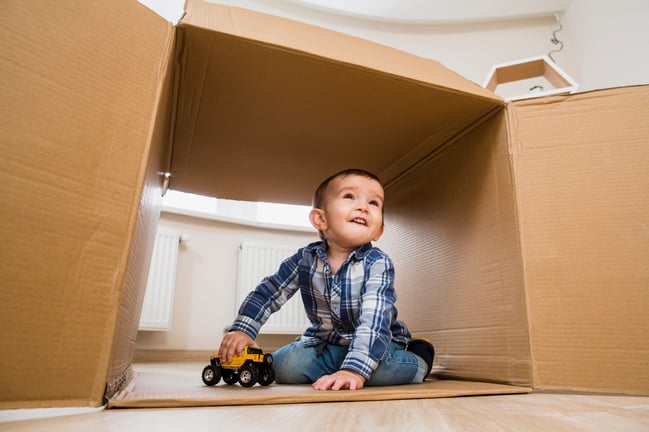
Approaches to Learning
Older Toddlers (18 to 36 months)
Components and Developmental Indicators
Older Toddlers (18 to 36 months)
Components and Developmental Indicators
Developmental Indicators
AL Goal-1: Children demonstrate curiosity and eagerness and express interest in the world around them.

Share objects of interest or discoveries with a trusted person.

Discover things that interest and amaze them and seek to share them with others.

Show enjoyment in what they have done.

Watch what others are doing and often try to participate.
AL Goal-2: Children actively seek to understand the world around them in play and everyday tasks.

Seek more information about people and their surroundings (study and gaze at an object carefully, become absorbed in figuring out something in their environment).

Use their whole body to learn (get mud or paint on themselves from head to toe, climb into a big, empty box).

Communicate what they want to do or know using gestures, facial expressions, or simple questions. (“What dat?”)
Developmental Indicators
AL Goal-3: Children demonstrate initiative and effort in play and everyday tasks.

Select and carry out activities (choose to set the table; gather play dishes and food, and then feed the dolls).

Show increasing interest in performing tasks independently (put on jacket, try to zip or button).

Increase self-help skills (putting on clothes, feeding self, using a tissue).
AL Goal-4: Children are engaged and maintain focus in play and everyday tasks.

Focus on a person or a hands-on activity for a short period of time (stay focused long enough to fill several containers with sand).

Continue to work on interesting activities while other things are going on around them.
AL Goal-5: Children persist at challenging activities in play and everyday tasks.

Keep working on an activity even after setbacks (block structure collapses, puzzle piece does not fit).

Seek help from others to complete a challenging activity.
Developmental Indicators
AL Goal-6: Children are willing to try new and challenging experiences in play and everyday tasks.

Explore freely without a familiar adult nearby.

Try out new skills in a familiar environment (learn to climb steps and then try to climb ladder to the slide).

Approach a challenge with confidence (try to lift a heavy object, work on a difficult puzzle).

Want to do things their own way (push an adult’s hand away if the person is trying to help).
AL Goal-7: Children use a variety of strategies to solve problems in play and everyday tasks.

Try a variation of strategies to get what they want or solve a problem, often by trial and error.

Recognize problems and make adjustments to actions to correct mistakes.

Use language to obtain help to solve a problem (“My trike won’t go.”)

Use materials in new ways to explore and solve problems (bring a big spoon to the sand table when all of the shovels are in use, pile blocks on a towel and drag them across the floor when there are too many to carry).
Developmental Indicators
AL Goal-8: Children engage in increasingly complex play.

Try to involve other children in play (give a peer a ball).

Make believe, pretend, and act out familiar life scenes, sometimes using objects to represent something else (a shoe becomes a phone).

Play with others with a common purpose (play a chase game).

Communicate about what is happening during pretend play (“He eating,” point to a picture on a communication board when feeding a toy baby with a spoon, “Now go work,” after putting on shoes and vest).
AL Goal-9: Children demonstrate creativity, imagination, and inventiveness in play and everyday tasks.

Broaden their use of art and construction materials and toys in new and unexpected ways (use a tambourine as a hat, cut play dough with scissors).

Pretend to be somebody or something other than themselves (pretend to be an animal or another family member).

Pretend one object is really something different (use Legos®️ as food while stirring a pot).




